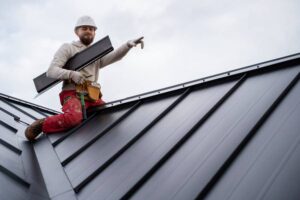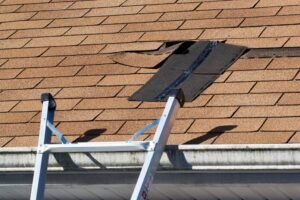Siding enhances property value and is the first thing that potential buyers see from the curb. With a range of options in the market, from wood to brick to vinyl, homeowners use siding to add definition and color to their finishing. The available choices offer different durability, aesthetics, pricing, and energy efficiency. It is, therefore, important to educate oneself on the different materials to understand the aesthetics that meet one’s needs within an attainable budget. Here are the most popular varieties of siding to consider.
Wood Siding
Wood siding is one of the most attractive home siding options because of the timeless and natural look. There are common types of this siding, including shingles, wood planks, and panels, or clapboards. Clapboard siding utilizes horizontally installed wood with overlapping lower and upper pieces. Western redwood and red cedar are considered the best woods for exterior siding because they are durable and attractive. Shingles offer a consistent and smooth look and can be cut into different shapes to enhance exterior beauty.
Pros
- Easy to install because of lightweight
- It is eco-friendly to the environment
- Wood siding can be painted and stained in different colors
- It is energy efficient
Cons
- Wood must always be consistently maintained, which makes it costly
- Can easily be damaged by water or insects
- Not ideal for dry climate because it is not fire-resistant
Metal Siding
There are a few varieties of metal siding, but the most popular are steel and aluminum. This type of siding offers modern aesthetic and gives a home a unique look. In coastal areas, aluminum is usually the best option because it protects against the salt air.
Pros
- Metal never rots or molds, thus, requiring less maintenance
- The siding does not fade
- Very eco-friendly because every panel is adequately cut to reduce waste
- It is fire resistant making it fit for dry areas
Cons
- Can rust if not installed properly
- Can easily dent because aluminum is a soft metal
- This siding takes long to install because the material is heavy
- Can rust quickly is not well maintained
Brick Siding
Brick siding is a type of siding commonly found on English, Tudor, and Colonial exteriors. With different textures and sizes, the siding creates a beautiful look that lasts longer. Today, most houses use veneer bricks, which are constructed outside a wood frame structure and held with mortar.
Pros
- Brick siding lasts hundreds of years without much maintenance required
- Bricks are fire-resistant
- Brick siding does not require finishing or repainting regardless of the weather
- Bricks are durable and termite-proof
Cons
- This is an expensive siding option
- When you paint bricks, it is impossible to get back the natural color
- Over time, mortar joints may weaken, which may require replacement
Fiber Cement Siding
Fiber cement siding offers the look of stucco, wood, or masonry, and is available in different textures and styles. The siding is a mixture of cement, wood, and sand. Finishes and factory paintings are always recommended for low-maintenance and to make them non-flammable.
Pros
- It is not susceptible to insect and requires a low maintenance cost
- It does not rot or decay and is resistant to salty, coastal areas
- Its texture and finish enhances versatility
Cons
- It should be repainted after every 12 years
- It is more costly compared to other siding alternatives
Vinyl Siding
Vinyl siding is known for its durability and has various options for colors. The siding also has a variety of profiles, including vertical panels, shakes, beaded, scallops, dutch lap, and fish scales.
Pros
- Has a wide variety of colors
- It is durable and mostly comes with a warranty of 30 to 40 years
- Its texture is versatile
- It is the most economical option
Cons
- Vinyl siding is not resistant to water
- Vinyl cannot be repainted once a color is chosen
- Under extreme weather conditions, vinyl material may bend










